There’s something magical about standing under a desert sky at night, where the lack of city lights reveals a canvas of stars most people never get to see. Desert towns across the American Southwest have turned their remote locations and crystal-clear skies into incredible opportunities for stargazing adventures. These communities offer everything from guided astronomy tours to world-class observatories, making them perfect destinations for anyone seeking to connect with the cosmos.
The combination of high elevation, dry air, and minimal light pollution creates ideal conditions for celestial viewing. Here are 15 desert towns that offer exceptional stargazing tours and astronomical experiences.
Sedona, Arizona
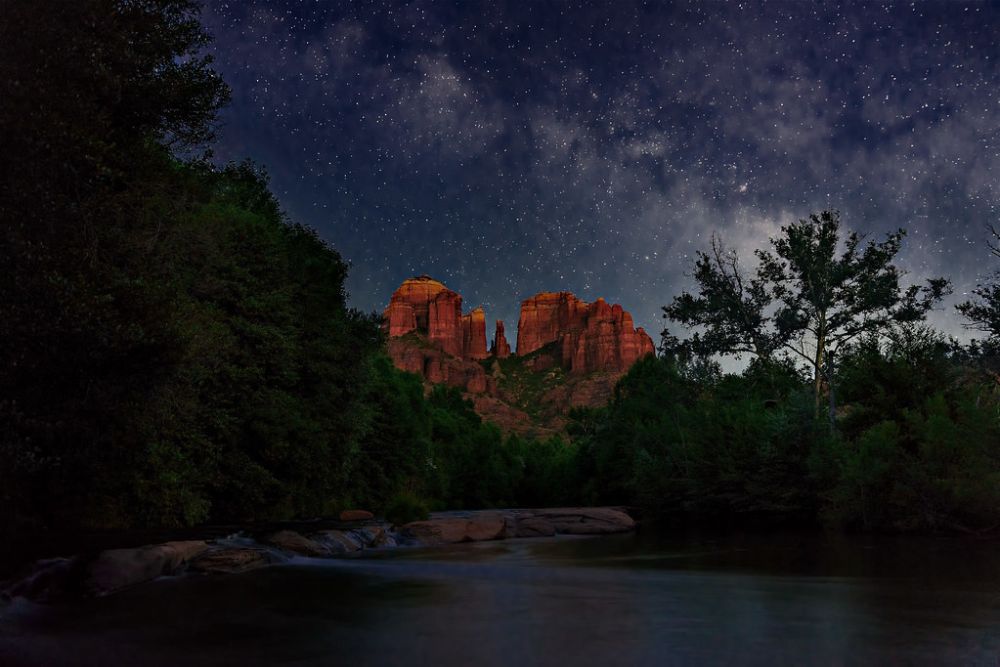
Sedona’s red rock formations create a stunning backdrop for nighttime sky viewing, while the town’s designation as an International Dark Sky Community ensures minimal light pollution. The area sits at 4,300 feet elevation, providing clearer atmospheric conditions than lower desert regions. Several local companies offer guided stargazing tours that combine telescope viewing with storytelling about Native American star legends.
The contrast between the crimson rocks and the sparkling night sky creates an unforgettable visual experience that photographers and astronomy enthusiasts alike find captivating.
Moab, Utah
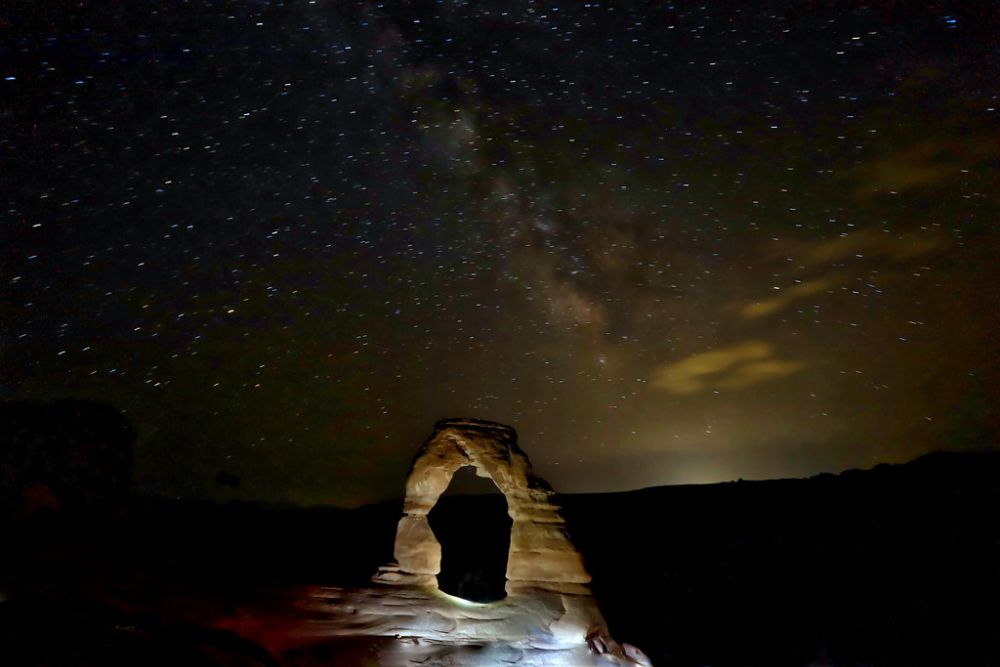
This adventure hub near Arches and Canyonlands National Parks offers some of the darkest skies in the continental United States. Moab’s remote location means you can see the Milky Way stretching across the sky like a river of light on clear nights.
Local outfitters provide telescope tours that often include camping experiences, allowing visitors to spend entire nights under the stars. The surrounding red rock canyons act as natural amphitheaters, creating intimate settings for learning about constellations and planets.
Like Travel Pug’s content? Follow us on MSN.
Borrego Springs, California
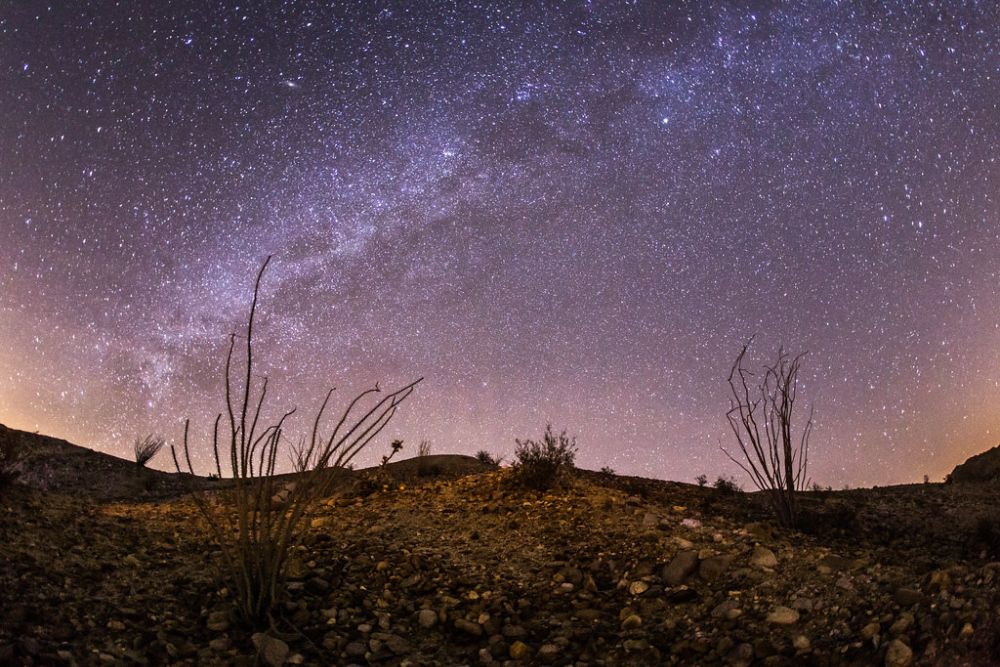
As the first International Dark Sky Community in California, Borrego Springs takes light pollution seriously with strict ordinances protecting their pristine night skies. The town sits in the heart of Anza-Borrego Desert State Park, surrounded by hundreds of thousands of acres of protected wilderness.
Local astronomy groups host regular star parties where visitors can look through powerful telescopes and learn from experienced astronomers. The town’s commitment to dark sky preservation means even the street lights are specially designed to minimize upward light scatter.
Tucson, Arizona
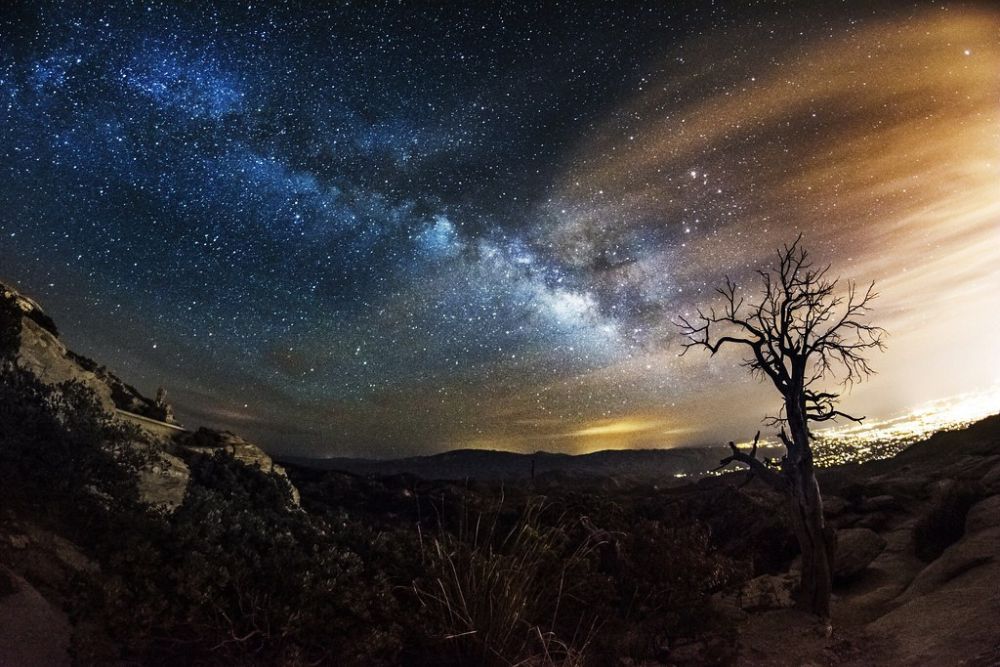
Home to multiple world-renowned observatories, Tucson offers both professional-grade astronomy facilities and accessible public tours. The city’s location in the Sonoran Desert provides over 300 clear nights per year, making it a reliable destination for stargazing adventures.
Kitt Peak National Observatory, just outside town, offers public programs where visitors can use research-grade telescopes. The University of Arizona’s astronomy department also provides educational tours that explain everything from basic constellation identification to cutting-edge space research.
Death Valley, California
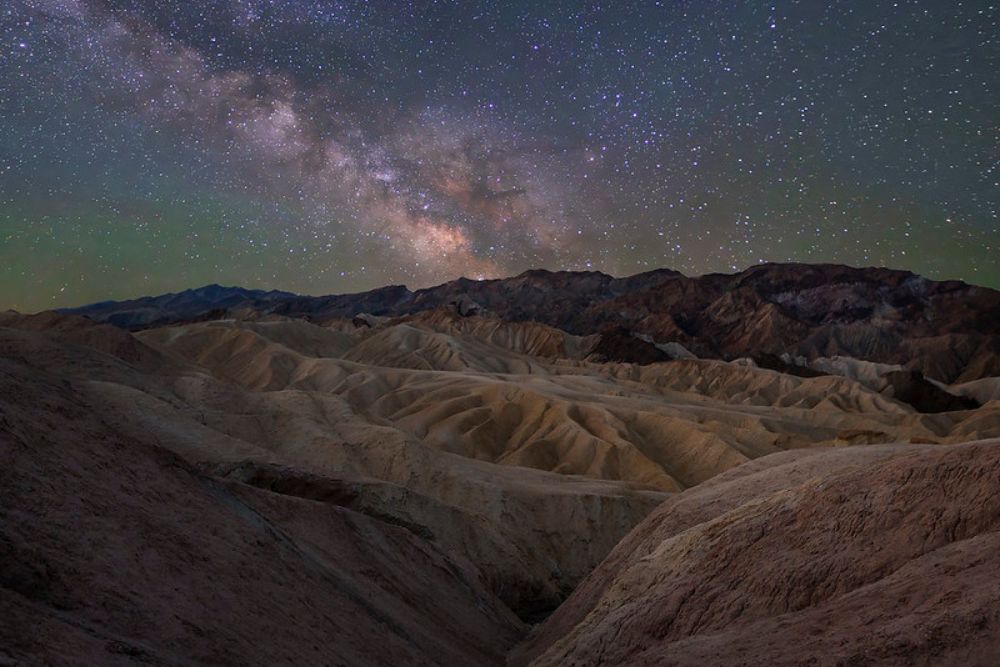
Death Valley National Park boasts some of the darkest skies in North America, with virtually no light pollution for hundreds of miles in any direction. The park’s extreme dryness means atmospheric distortion is minimal, creating incredibly sharp views of celestial objects.
Rangers lead astronomy programs during the cooler months, and the park hosts an annual Dark Sky Festival that draws stargazers from around the globe. Standing in this vast desert basin while looking up at billions of stars creates a profound sense of cosmic perspective.
Like Travel Pug’s content? Follow us on MSN.
Flagstaff, Arizona
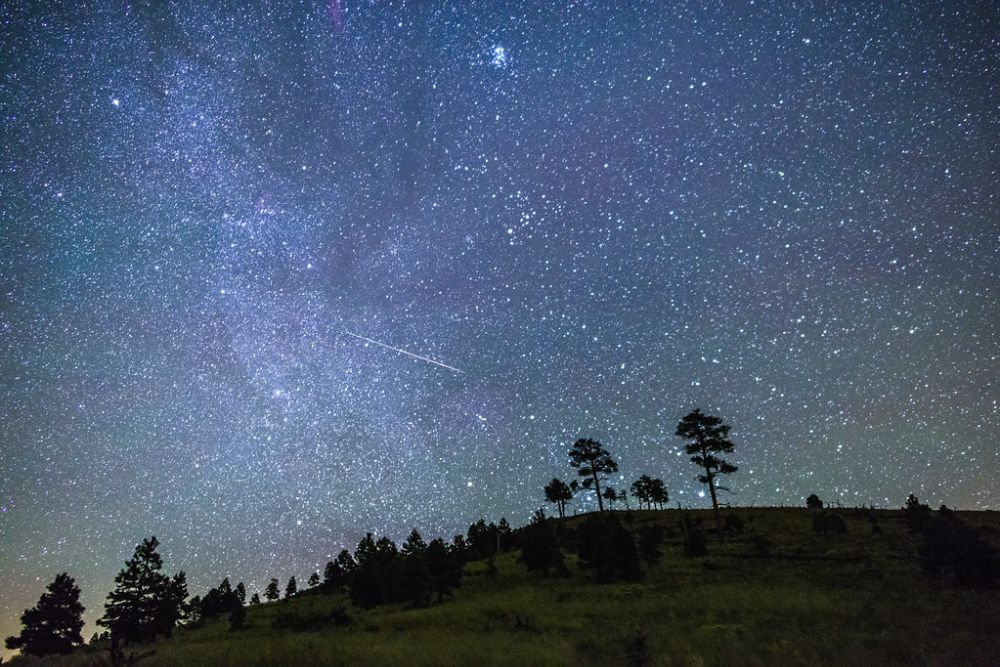
The world’s first International Dark Sky City, Flagstaff has been protecting its night skies since the 1950s to support the nearby Lowell Observatory. This mountain desert town sits at 7,000 feet elevation, putting it above much of the atmospheric haze that affects lower-elevation locations.
Lowell Observatory offers public viewing sessions where visitors can look through the same type of telescope used to discover Pluto. The town’s elevation also means cooler temperatures year-round, making nighttime stargazing more comfortable even in summer.
Atacama Desert, Chile
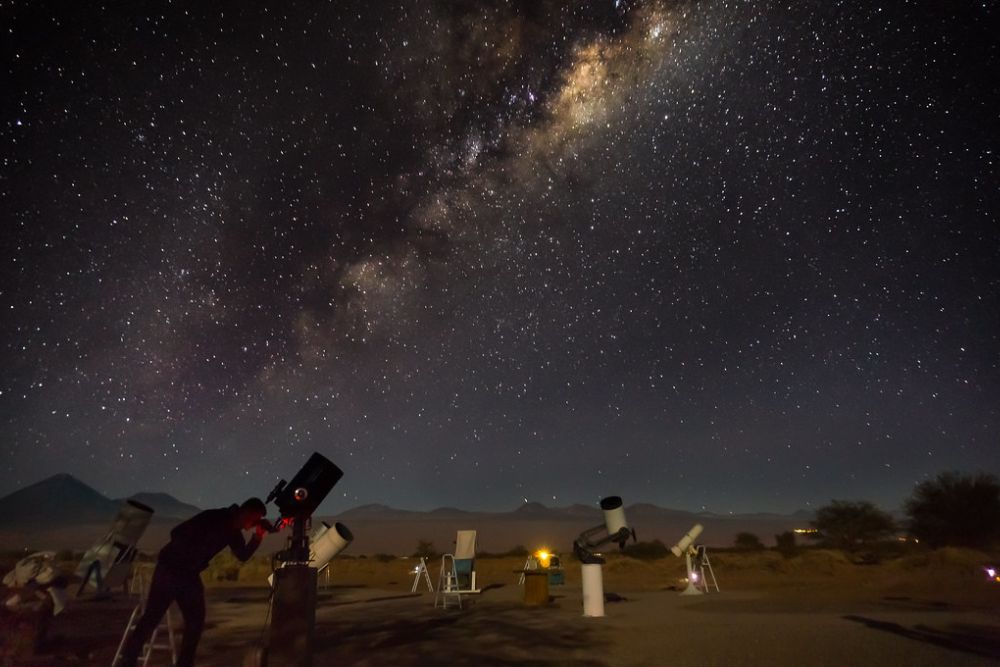
While technically international, the Atacama Desert represents the gold standard for astronomical viewing, with several tour companies offering multi-day stargazing expeditions. This high-altitude desert receives less than half an inch of rainfall annually, creating atmospheric conditions so clear that major observatories from around the world have built facilities here.
Specialized tour operators provide everything from basic stargazing to advanced astrophotography workshops. The combination of Southern Hemisphere constellations and incredibly dry air creates viewing conditions that simply don’t exist anywhere in North America.
Kanab, Utah
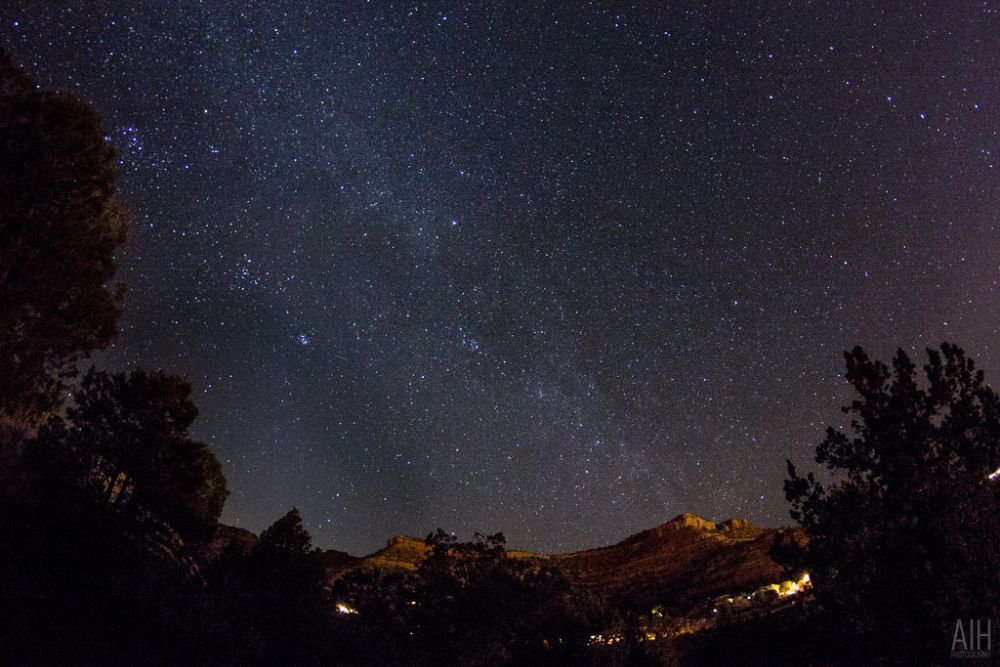
This small town serves as a gateway to several national parks and offers excellent stargazing opportunities in a more intimate setting than larger tourist destinations. Kanab’s high desert location provides clear skies and minimal light pollution, while local tour guides often combine stargazing with storytelling about the area’s geological history.
The town’s elevation of 4,900 feet helps reduce atmospheric interference, and the surrounding red rock formations create natural windbreaks for comfortable outdoor viewing. Several local outfitters offer customized astronomy tours that can be combined with daytime adventures in nearby Zion or Bryce Canyon.
Like Travel Pug’s content? Follow us on MSN.
Terlingua, Texas
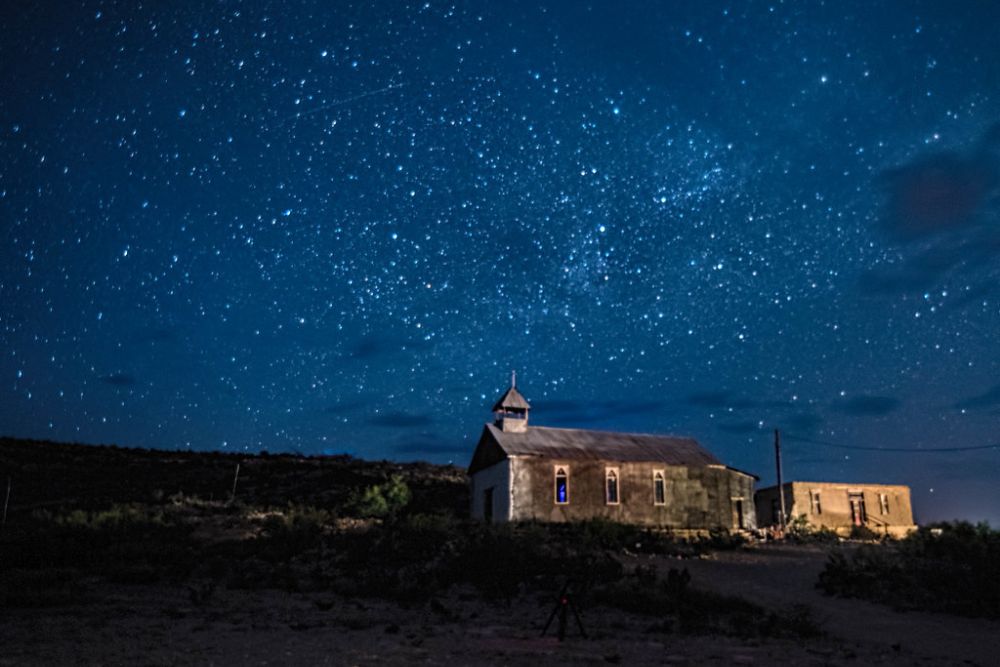
This tiny desert town near Big Bend National Park offers some of the darkest skies in Texas, with the nearest major city over 300 miles away. The town’s remote location in the Chihuahuan Desert means virtually no light pollution, while the high desert elevation provides excellent atmospheric conditions.
Local astronomy enthusiasts often set up telescopes in the town’s informal gathering areas, creating impromptu stargazing sessions for visitors. The combination of desert silence and brilliant stars creates an almost otherworldly experience that many describe as deeply moving.
Landers, California
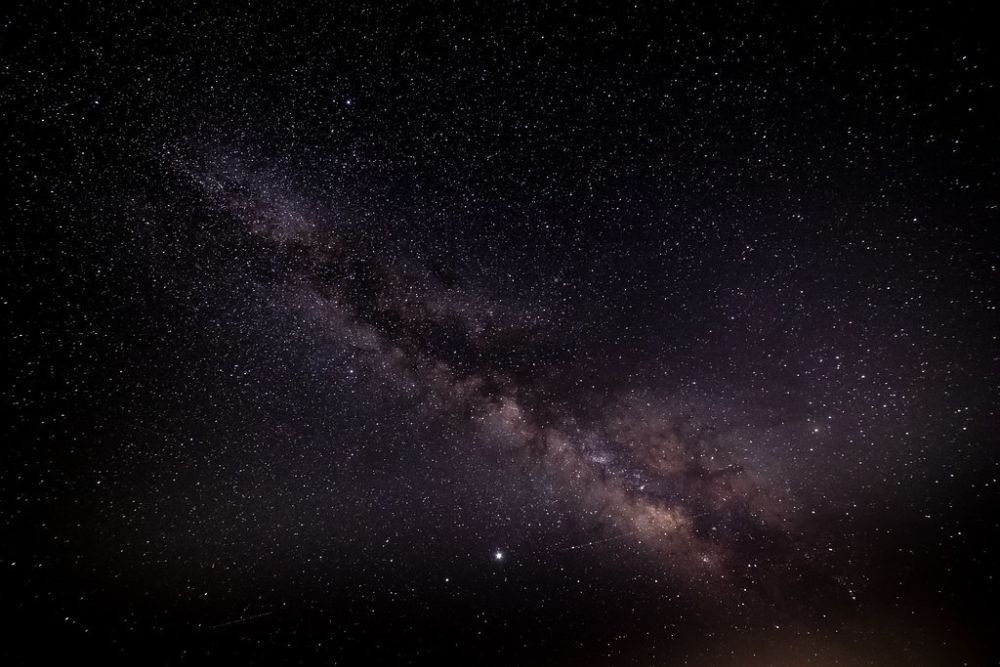
Home to the Integratron, this small Mojave Desert community has become a destination for both New Age seekers and serious astronomers. The town’s location between Joshua Tree and Death Valley provides access to some of California’s darkest skies, while the high desert elevation ensures clear viewing conditions most nights.
Several local residents offer private stargazing tours using high-quality telescopes, often combined with sound bath experiences at the Integratron. The area’s unique geological features create interesting foreground elements for astrophotography enthusiasts.
Goldendale, Washington
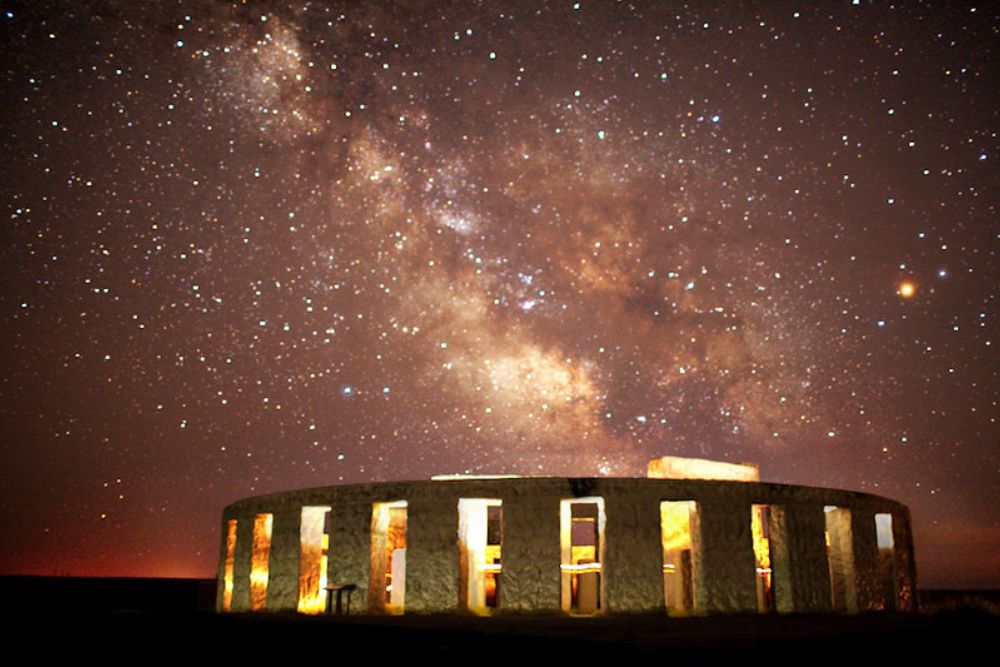
Though not technically in traditional desert terrain, Goldendale sits in the high desert of south-central Washington and offers exceptional stargazing opportunities. The town is home to Goldendale Observatory State Park, which features a 24.5-inch telescope available for public use.
The facility offers both daytime solar viewing and nighttime deep-sky observations, with knowledgeable volunteers helping visitors navigate the cosmos. The park’s elevation of 2,100 feet and location away from major cities provides surprisingly dark skies for the Pacific Northwest.
Like Travel Pug’s content? Follow us on MSN.
Crestone, Colorado
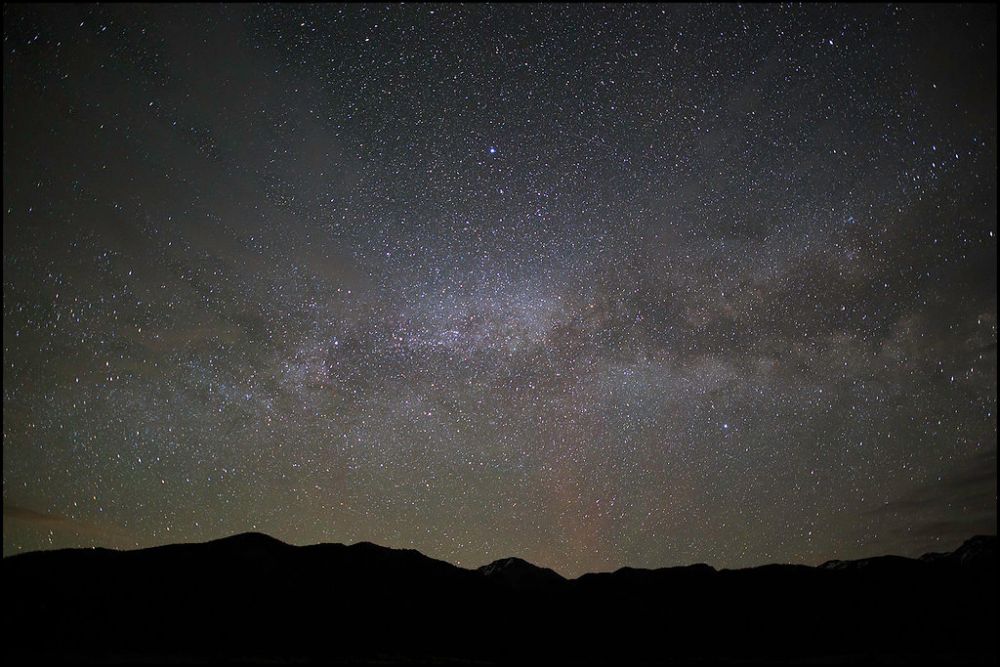
This small town in the San Luis Valley sits at 7,800 feet elevation in a high desert environment surrounded by 14,000-foot peaks. The combination of altitude and dry air creates exceptional viewing conditions, while the town’s spiritual community has embraced astronomy as part of their connection to the cosmos.
Local astronomy groups host regular star parties, and several retreat centers offer stargazing as part of their programs. The thin air at this elevation means stars appear unusually bright and crisp, creating an almost three-dimensional effect.
Benson, Arizona
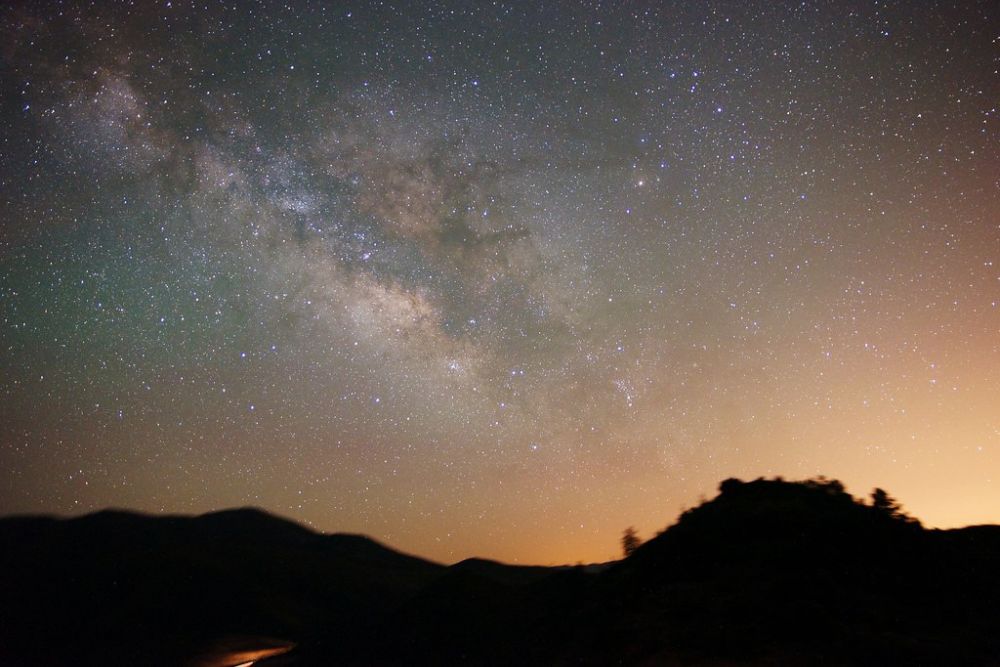
Located in the Sulphur Springs Valley, this small town offers easy access to some of Arizona’s darkest skies without the crowds of more famous destinations. The area’s high desert location provides over 300 clear nights annually, while the surrounding mountain ranges create natural barriers against distant light pollution.
Local astronomy clubs welcome visitors to their regular observing sessions, and several guest ranches in the area offer stargazing as part of their desert experience packages. The town’s elevation of 3,600 feet provides a good balance between accessibility and atmospheric clarity.
Twentynine Palms, California
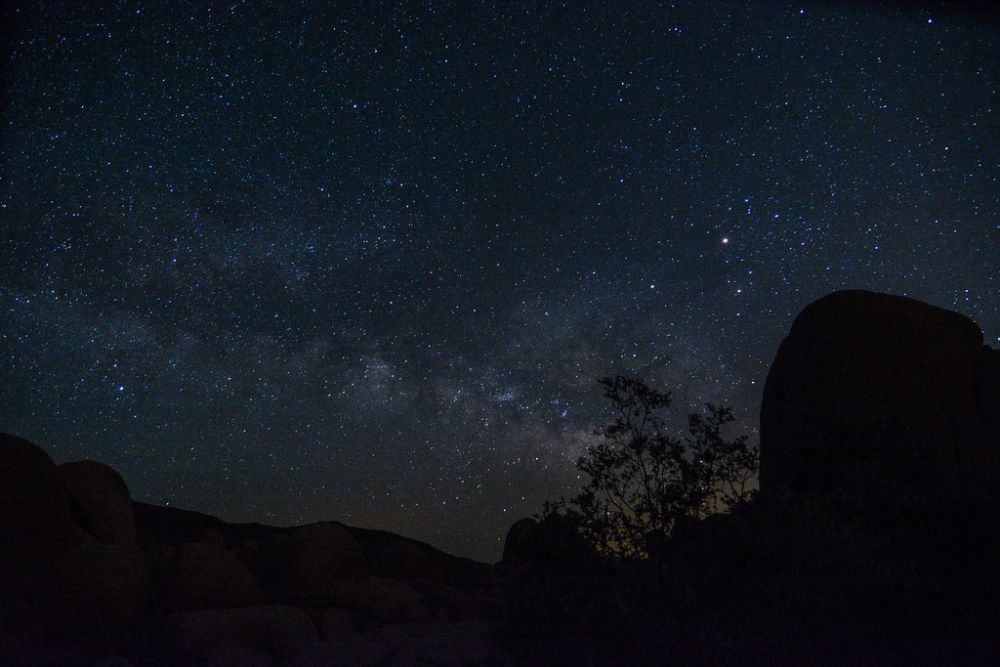
This desert community near Joshua Tree National Park offers excellent stargazing opportunities in a more developed setting than many remote desert locations. The town’s location in the Mojave Desert provides access to genuinely dark skies, while its proximity to the national park means access to protected areas with minimal light pollution.
Several local tour companies offer combined desert ecology and astronomy tours, teaching visitors about both the unique desert ecosystem and the night sky above it. The area’s consistent clear weather makes it a reliable destination for planned stargazing trips.
Like Travel Pug’s content? Follow us on MSN.
Cortez, Colorado
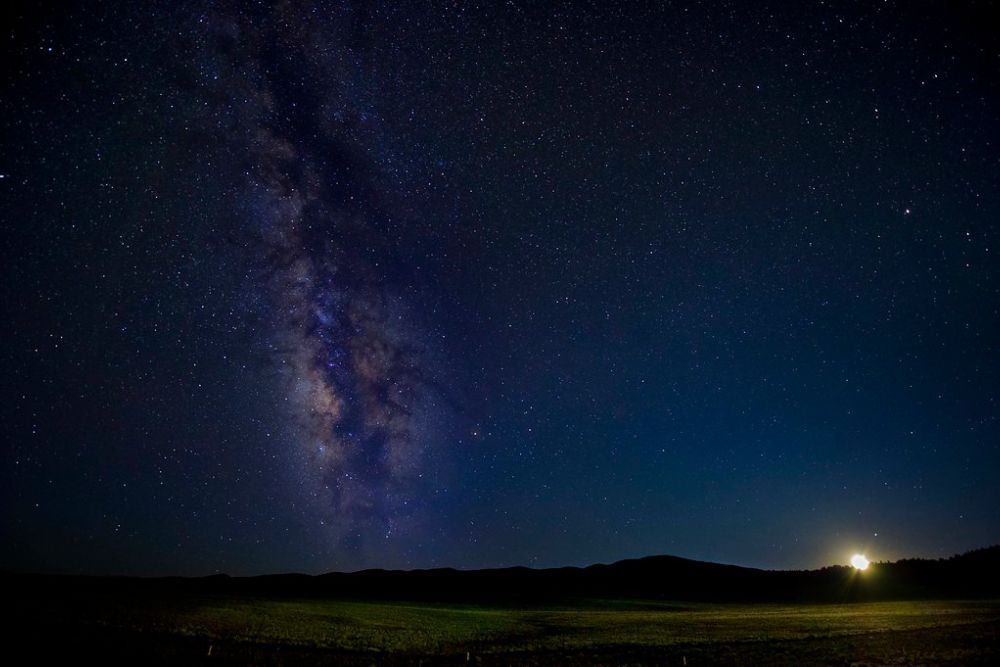
Situated in the high desert of southwestern Colorado, Cortez offers stargazing opportunities combined with a rich cultural history from the ancestral Puebloan peoples. The town sits at 6,200 feet elevation, providing excellent atmospheric conditions for astronomy, while the surrounding Four Corners region offers some of the darkest skies in the lower 48 states.
Local tour operators often combine stargazing with visits to nearby Mesa Verde National Park, creating educational experiences that connect ancient astronomical knowledge with modern stargazing techniques. The area’s dry climate and high elevation create viewing conditions that rival much more remote locations.
Where Desert Nights Meet Infinite Skies
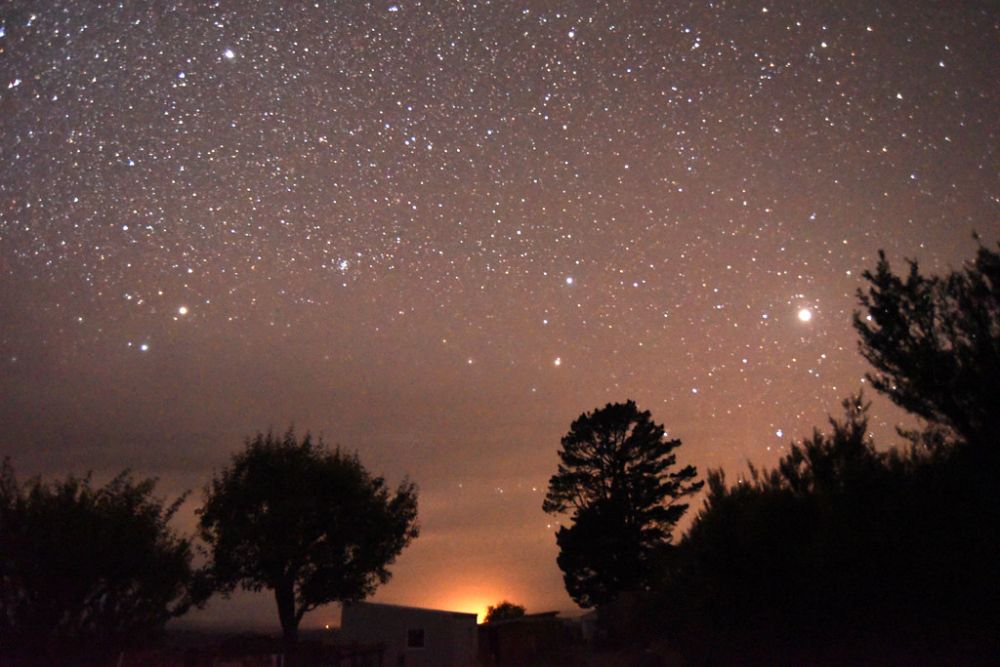
These desert communities have transformed their remote locations and clear skies into gateways for cosmic exploration, offering experiences that connect visitors with the universe in profound ways. From professional observatories to intimate guided tours, each town provides its own unique approach to sharing the wonders of the night sky. The combination of minimal light pollution, dry air, and elevated locations creates viewing conditions that reveal details of the cosmos invisible to most urban dwellers.
Whether you’re a seasoned astronomer or someone who’s never looked through a telescope, these desert towns offer transformative experiences that remind us of our place in the vast cosmic landscape. The next time you find yourself planning a getaway, consider heading to one of these stargazing destinations where the ancient art of looking up meets modern astronomical knowledge.
More from Travel Pug

- 20 Best Beach Towns in the Carolinas
- 13 Destinations Where Tourists Regularly Regret Their Trip
- 20 Things You Actually Get in First Class
- 20 Small Airports With Aviation Museums
- 20 Places in the U.S. That Are Perfect for a Reset Trip
Like Travel Pug’s content? Follow us on MSN.
